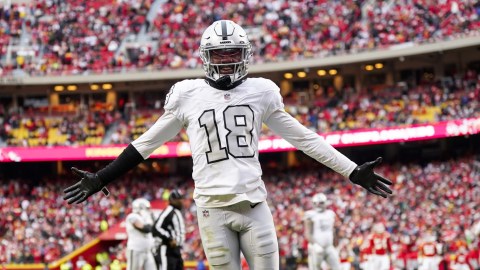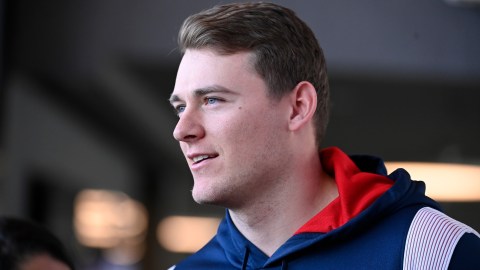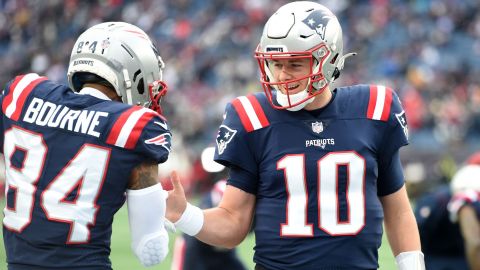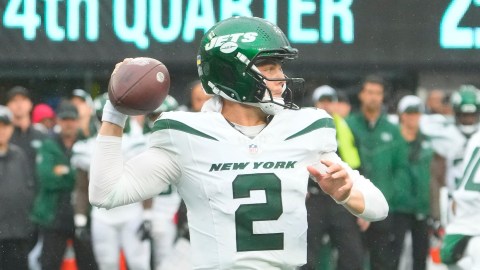Maurice Jones-Drew is the Jacksonville Jaguars' pre-eminent running back. He's carried the load, at least in part, for six seasons. He's averaged 4.6 yards a carry and has three straight years of more than 1,000 yards, including 1,606 last season. He has 62 career touchdowns.
One problem: It's 2012.
Jones-Drew is making headlines by asking for a new contract and sitting out practice until it happens. But, while the numbers he has posted would warrant a new deal at any other point in NFL history, he's playing in different times. Not only do most teams not lean on a rushing offense anymore, but any franchise that makes a significant investment in a running back today is throwing away its money.
The age of the $62 million running back is officially over (thanks, Shaun Alexander).
Running backs have always had a short shelf life in the NFL, so teams have long been careful when signing them, especially to long-term deals. But as backs have broken down again and again over the past decade, a new pattern has emerged that has helped NFL teams get away from leaning on the rushing game to carry the offense.
With the league's defensive rules being loosened to encourage passing, and with top-notch quarterbacks taking over spread-option offenses, running backs are needed less and less on teams looking to be contenders. Even the usual rush-and-defense teams such as the Pittsburgh Steelers have made themselves comfortable with a lesser back. Some teams, like the Patriots, have used two or three running backs instead — usually good veteran signings or eager draft picks.
The quarterback is unquestionably the most important position on any NFL team, and that's quickly being followed by the tools the quarterback uses. Running backs have even become more valuable for whether they can catch the gunslinger's passes than whether they can bust out the type of 30- to 50-rush games that once dominated the NFL.
That puts Jones-Drew and his colleagues in a tough place.
On one hand, these running backs are incredibly valuable to their teams. While the running game is used less, it certainly isn't obsolete, and offenses need rushing downs to keep defenses on their toes and pick up certain yards. When young running backs come in and break out for great seasons, like Jones-Drew or Chicago's Matt Forte, they can save a team offensively — and they're often doing it at a pretty nice rate, considering their rookie deals may not have been that great (especially if they weren't a big name coming in).
On the other hand, though, the NFL has changed. While teams are happy to get what they can from an eager rusher, they're not going to be willing to pay quarterback or receiver money to a player they're not building the offense around. And they're also going to be wary about how soon that player is going to break down, considering they just worked him to the bone for several seasons before his deal came up.
Jones-Drew is due to make $4.45 million this year and $4.95 million next year, which isn't too bad. But DeAngelo Williams got $8.6 million recently, LeSean McCoy landed a $9 million deal and Ray Rice seemed to think $10 million would be good for him.
The Jaguars have said they're not willing to work on a new contract with Jones-Drew, and they're being smart — there's no way running backs should be making around $10 million a year in today's NFL.
But Jones-Drew has carried the load for the team for a long time, and his huge production will likely take its toll on the length of his career.
The cautionary tale comes from Jones-Drew's AFC South counterpart, Chris Johnson. Johnson was electrifying when he broke into the league four years ago, and he had 4,500 yards over his first three years, including a 2,000-yard season. But, after fighting for a big contract last season, he came out and had his worst year yet. He ran for just 1,047 yards at 4.0 yards a carry, with only four touchdowns.
Clubs are worried that a big contract can be a security blanket that will stop production, and maybe rightly so. But milking a player for all he's worth before he gets a good deal isn't right, either.
In this case, though, it's pretty clear cut. The Jaguars are paying the going rate for a running back as the position is needed in the modern NFL, and Jones-Drew has two years left on his contract. In 2014, re-evaluation may be in order. But for right now, the Jaguars made the right call.



